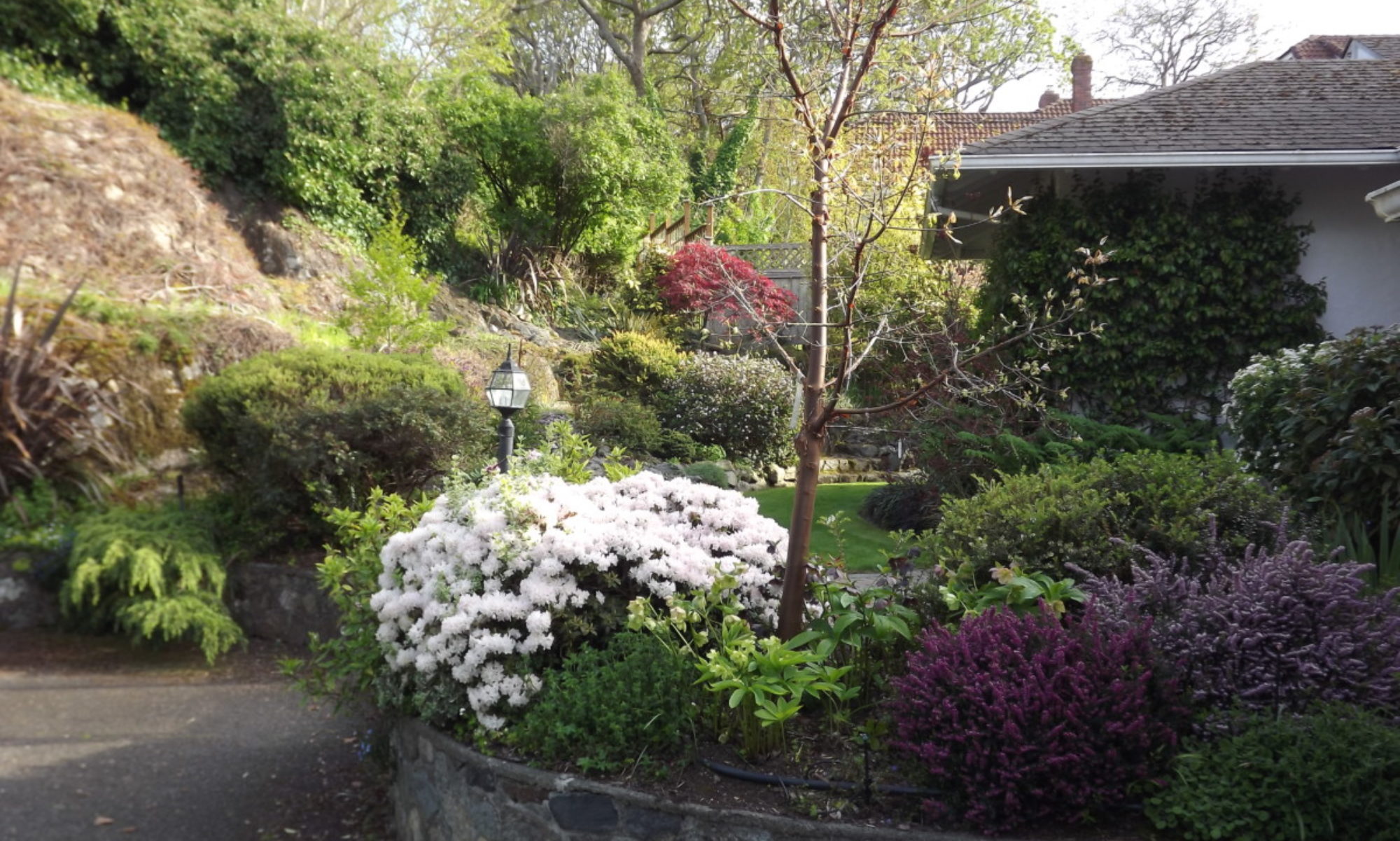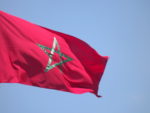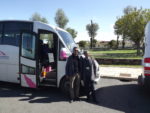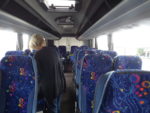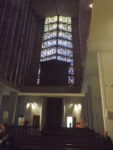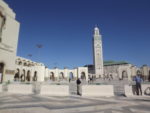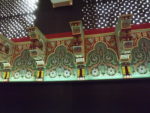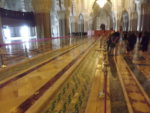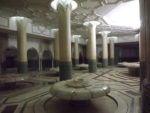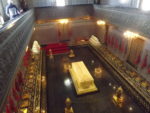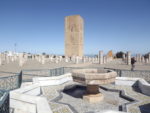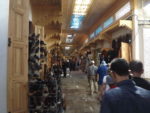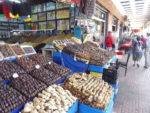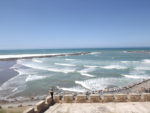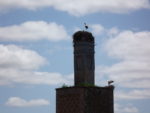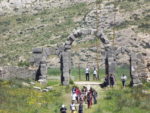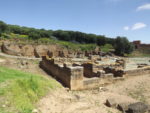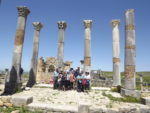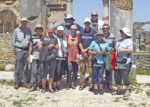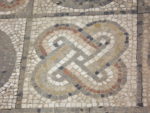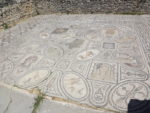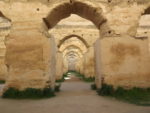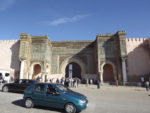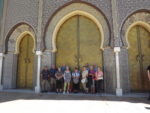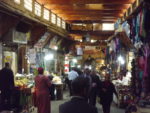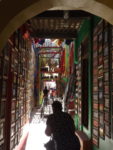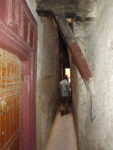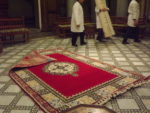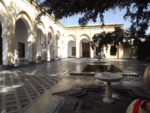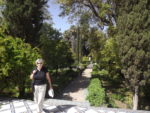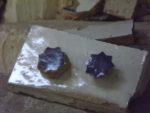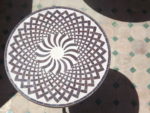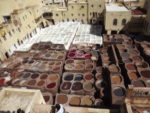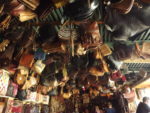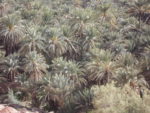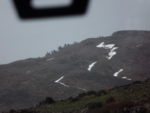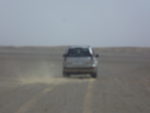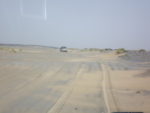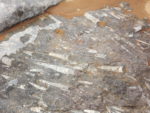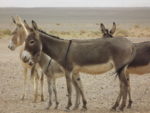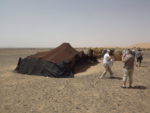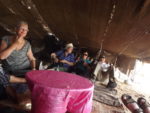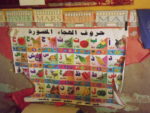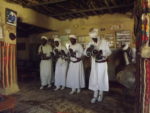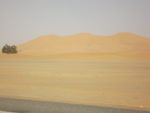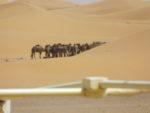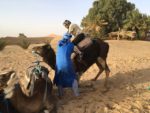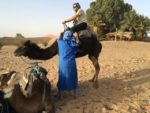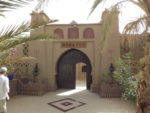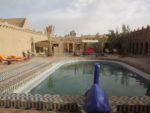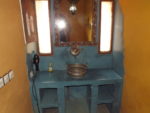We are halfway through our Moroccan adventure and this blog will help us process the scope and variety of our novel experiences. This country has been described as the interface between Europe and the Arab world, rather reminiscent of Turkey and being on a conducted tour makes a huge difference to our comfort level.
When we arrived in Casablanca it was pouring and we encountered two cloud bursts on the way to the hotel – quite unexpected. Fortunately next morning we woke to sunny skies and warm temperatures, so very welcome after the inclement weather in the UK. On our first evening, we met our fellow travellers, all Aussies except us. There are three couples, us, brother Don and his wife, Meg and Warren and Di, the youngsters in the group, Travelling with them are Ian, a workmate of Warren’s and Bronwen, an old family friend. There are two single women and Maria the sister of our tour leader Patrick, and Moulay, our charming local guide. We have a 26 seater bus so there is lots of room to spread out. For the welcome dinner we were taken to Rick’s Cafe for dinner. It had nothing to do with the movie, just a set up owned by an American with a good financial sense.
Casablanca, the largest city and a thriving port, has little character and not much interest for tourists. To ensure longer stays there, in 1993, the former king had built the third largest mosque in the world, a modern masterpiece, featuring magnificent mosaics, woodwork and plasterwork. It is the only mosque in Morocco into which non-Moselms are allowed. After our visit there, we drove to Rabat, the capital, a UNESCO World Heritage site, but also another huge, modern city. There we visited the Mauseleum of Mohammed V, the Hasan Tower and the Chellah Necropolis. It was there, too, we experienced our first medina, a bewildering maze of narrow streets, full of tiny shops, selling everything from footwear and apparel to fruits and vegetable to hunks of bloody meat, including goat and camel heads.
Next we drove to Fez, stopping on the way at the Roman ruins in Volubilis, Morocco’s most important archeological site. Again it was very reminiscent of sites in Turkey, a stunning hilltop location, beautiful mosaics but not much in the way of restoration. We visited Meknes, another UNESCO site, a 17th century imperial city with granaries and stables for 40,000 horses.
Fez is Morocco’s cultural and religious heart with teeming old and new medinas, a royal palace with grounds large enough for an 18 hole golf course. Over two very busy days we visited a ceramics factory where they hand made everything from coffee mugs and tagines to huge custom made mosaics. One huge one we saw had been ordered for a kitchen in New Zealand. We visited a carpet cooperative situated in a historic home and were sorely tempted by the beautiful workmanship. We also visited a famous tannery in the heart of the medina – not nearly as smelly as we expected – and saw the process from curing the raw skins to dyeing with vegetable dyes to the finished product, wallets, belts, slippers to the most beautiful leather and suede jackets. I contented myself with a pair of slippers.
We stayed in a beautiful boutique hotel, four old homes in the new medina (14th Century) combined to form an amazing collection of rooms, all different with nooks and crannies. There was a rooftop terrace where we ate our meals. It’s been warm enough to eat dinner outdoors, often in courtyards planted with orange trees and daturas. The food is very similar to Turkey with first course of various dishes of cured vegetables. Then there is soup served with flat bread followed by tagines served in the brown ceramic dish. These can be meat, fish or vegetarian and have not been nearly as spicy as we had anticipated – maybe made blander for tourist consumption. Desserts are often crepes but never fresh fruit as I had expected.
We had a LONG drive from Fez over the Atlas Mountains to the edge of the Sahara. Our first stop was in a skiing village in the Middle Atlas Mountains which looked as if it had been transported from Austria, quite disconcerting. There was snow at the side of the road as we crossed the high passes and then we began to see large expanses of green, which were the date palms growing by the river. When we neared our hotel we started to see the rolling sand dunes, very familiar from the movies. When we took our 4X4 tour across the dessert, the environment did not look like that at all. There had been coal mining in the area and the ground looked like rutted concrete with lots of cinders. To our surprise most of the Sahara is not the golden sand dunes. Our desert tour included being entertained by a nomadic family in their cloth tent in the middle of a wasteland. It was a bit too authentic for me – mint tea served sitting crossed leg in a tent full of flies and being sand blasted. Lunch was a bit more civilized, after which we were entertained with music performed by six men, descended from former slaves. It was pretty jazzy and reminded us of the Cajun music of Gator Beat. In the early evening we had to go on a camel ride to see the sun set over the sand dunes. The camels were obviously used to this and it was all very sedate, somewhat reminiscent of pony trekking. What we were quite unprepared for was dismounting to climb to the top of a sand dune, too steep for the camels. There we were high enough to have a commanding view across the desert. We slid back down on our bottoms!
Again our hotel had lots of character, built like kasbah with our tiled suite overlooking a central courtyard with a swimming pool. You could walk right out the door into the desert. We were lucky it was not particularly windy during our visit but even so there was a layer of grit everywhere and the evening meal was indoors because of the threat of a sandstorm.
The following photo gallery is now, I hope, largely chronological and captioned as of May 5
